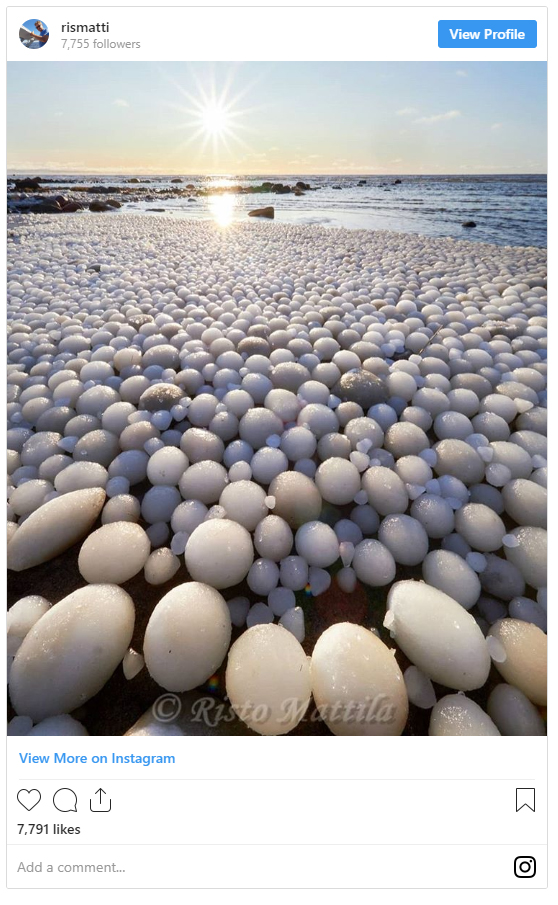Ice comes in many shapes and sizes, from mountainous icebergs to tiny flurries of snow. But few of us will ever come across a field of football-sized 'ice eggs'. Nature just loves to keep us guessing.
When amateur photographer Risto Mattila went for a Sunday stroll along Marjaniemi beach on Finland's Hailuoto Island recently, that was exactly what he found. Lucky for us, he took some snaps, which quickly spread through social media.
"I was with my wife at Marjaniemi beach. The weather was sunny, about -1 Celsius (30 Fahrenheit) and it was quite a windy day," Mattila told the BBC.
"There we found this amazing phenomenon. There was snow and ice eggs along the beach near the water line."
A stretch of roughly 30 metres (about 100 feet) of sand was littered with frozen spheres that ranged from golf ball-sized to the circumference of a football.
The bizarre sight might look like carnage after a serious snowball fight, but it actually has more in common with your garden variety hailstones, because the formation of these 'ice eggs' requires a near-perfect set of meteorological conditions - not too warm, not too cold, not too windy, not too still.
First of all, you need relatively calm water. It also has to be just cold enough for ice to form, given the opportunity.
That opportunity requires something small for that close-to-freezing water to cling to, such as small ice crystals or grit floating in the water.
Hail forms when water condenses and freezes onto particles blown up inside storm clouds, for example. As they fall and rise, the stones collect layers of ice, until finally they grow too heavy and drop.
In the case of these ice eggs, it's not the chaotic blast of rising air currents that lead to the slow build-up of ice, but the gentle churn of water, blown by a suitably stiff breeze that helps layers of ice form on the floating ball as it rolls through the freezing currents.
Take a look at these grittier ice rocks being washed up on the shore of Lake Michigan in the US a few years ago to get an idea of how they develop:
Given enough time, the frozen rocks can grow to become virtual boulders. In 2016, similar giant snowballs washed up on a beach in Siberia, some measuring a metre (about 3 feet) across.
It's not the kind of thing most of us would see while out on a winter walk on our favourite beach or river bank, but Mattila wasn't the only one to appreciate this unusual phenomenon, with local resident Ritva Rundgren capturing this footage below.
ICE BALLS cover Beach in Finland!!!! 😮😮
— Live Storm Chasers (@LiveStormChaser) November 7, 2019
Permission: Ritva Rundgren
Hailuoto, Finland - Bothnian Sea@WeatherBug - Download the weather app today! pic.twitter.com/F9fe1K8tcd
Meanwhile, another odd assortment of icicle-laden 'eggs' has washed up on the banks of the Wulik River in Alaska.
Interesting formation of ice on the banks of the Wulik River near Kivalina. We suspect a combination of strong waves and super cold water created these ice balls. pic.twitter.com/oIM19Jle2N
— NWS APRFC (@NWSAPRFC) November 6, 2019
Thanks to so many people out there with easy access to cameras, and easy ways to share their discoveries around the world, we all get to experience the awesome moments nature serves up.

